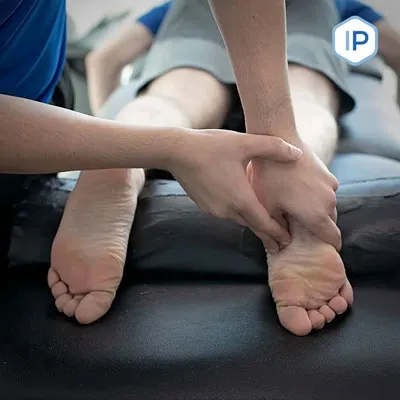
Sciatica: Understanding and Addressing Nerve Pain
What Is Sciatica or What Causes It?
Sciatica is a condition characterised by pain radiating along the sciatic nerve, which runs from the lower back through the hips and buttocks and down each leg. Common causes include a herniated disk, bone spur on the spine, or narrowing of the spine (spinal stenosis) compressing the nerve.
Symptoms of Sciatica You May Be Experiencing
Symptoms include pain that radiates from your lower (lumbar) spine to your buttock and down the back of your leg, discomfort anywhere along the nerve pathway, and numbness or tingling in the affected leg or foot. The pain can vary from a mild ache to a sharp, burning sensation or excruciating discomfort.
Treatment Options for Sciatica
Treatment at Indergaard Physiotherapy may include specific exercises to relieve nerve compression, manual therapy, and advice on posture and movement. In some cases, more advanced treatments like Shockwave Therapy may be beneficial.
Preventive Measures and Lifestyle Changes for Sciatica
Regular exercise, maintaining good posture, and ergonomic adjustments while sitting can help prevent sciatica or alleviate symptoms. Strengthening the core muscles can also reduce the risk of sciatic nerve compression.
When to Seek Professional Advice for Sciatica
If you’re experiencing persistent pain radiating down your leg, numbness, or tingling, or if your symptoms affect your ability to perform daily activities, consult with our team at Indergaard Physiotherapy. We’re here to assess your condition and tailor a treatment plan to relieve your sciatica symptoms and improve your quality of life.
Sciatica is typically caused by nerve compression from a herniated disk or bone spur.It can also be due to entrapment within muscles at the back of the hip. Identifying the exact cause is key to effective treatment.
Look for radiating leg pain, lower back discomfort, and numbness or tingling in the leg or foot.
Treatments include targeted exercises, manual therapy, and lifestyle adjustments, with a focus on relieving nerve compression.
Prevention includes regular exercise, proper posture, and core muscle strengthening to support the spine and reduce nerve pressure.
It’s important to seek professional help for persistent or severe sciatica symptoms that affect daily functioning.
What to expect in your consult?
When you attend for your initial consultation here at Indergaard Physiotherapy, you will be taken through our thorough assessment process, where we will find the root cause of your pain. Your therapist, in partnership with yourself, will form a plan for how we aim to get you pain free and back to full function as soon as possible.
This can include hands on therapy, Shockwave Therapy, Laser Therapy, movement re-education and rehabilitation, as well as exercises. Our goal is to give you the best possible care to enable you to move better and feel great as soon as possible.
FAQ's
What We Treat
Conditions We Treat
Meet The Team
EXCELLENTTrustindex verifies that the original source of the review is Google. Best physiotherapist I've seen. Tom is amazing.Trustindex verifies that the original source of the review is Google. I have used Will previously with another issue that he helped me resolve. He’s lovely to deal with & I was clear when I left about what I needed to do to sort out this new problem. Very knowledgeable & I felt a lot happier when I came out than when I went in! Always recommend him. Thanks Will 😊Trustindex verifies that the original source of the review is Google. Always manage to get a quick appointment via the online system and the physiotherapists are very knowledgeable, backed up by the latest equipment.Trustindex verifies that the original source of the review is Google. After poor experience in York , searched for alternative and am delighted to say have come up trumps . Great set up and very knowledgeable and reassuring at very competitive rates ( half the price of the practise in York ! Would strongly recommend .Trustindex verifies that the original source of the review is Google. Will was a very knowledgable practitioner and gave clear and concise verbal information about my condition and treatment techniques.Great that he read through all the documentation. I sent him and his assessment was an enhancement not a duplication of what has happened before.Trustindex verifies that the original source of the review is Google. I have used your services for over 10 years and all of your physiotherapist are excellent. The aftercare and exercises on the app are great for ensuring a quick recoveryTrustindex verifies that the original source of the review is Google. 10/10. Tom helped me with my sciatica both in physical treatment and keeping positiveTrustindex verifies that the original source of the review is Google. Showed me what was wrong and then fixed it. Brilliant. Tom and the team were amazing, the facility and equipment were mindblowing and the customer service was great. Thanks!Trustindex verifies that the original source of the review is Google. Always receive great service and treatment from Oli. Really knowledgeable, and explains everything really well. Always really friendly and keen to help as much as he can. Highly recommended!

